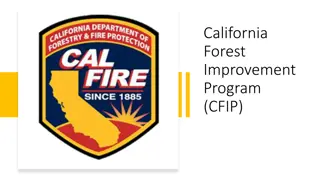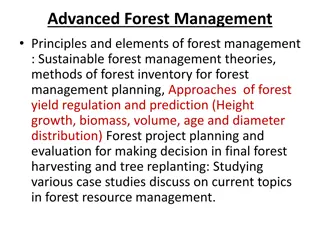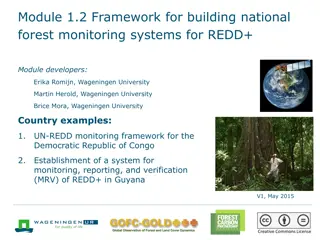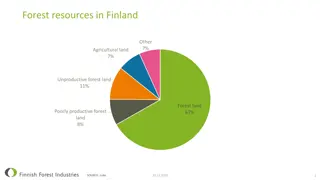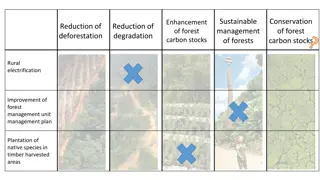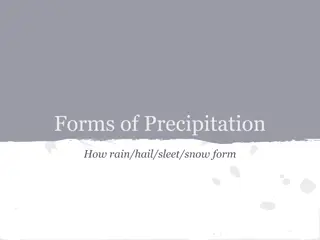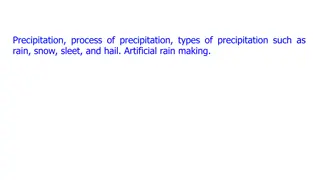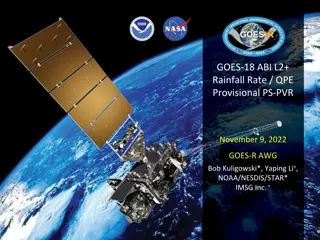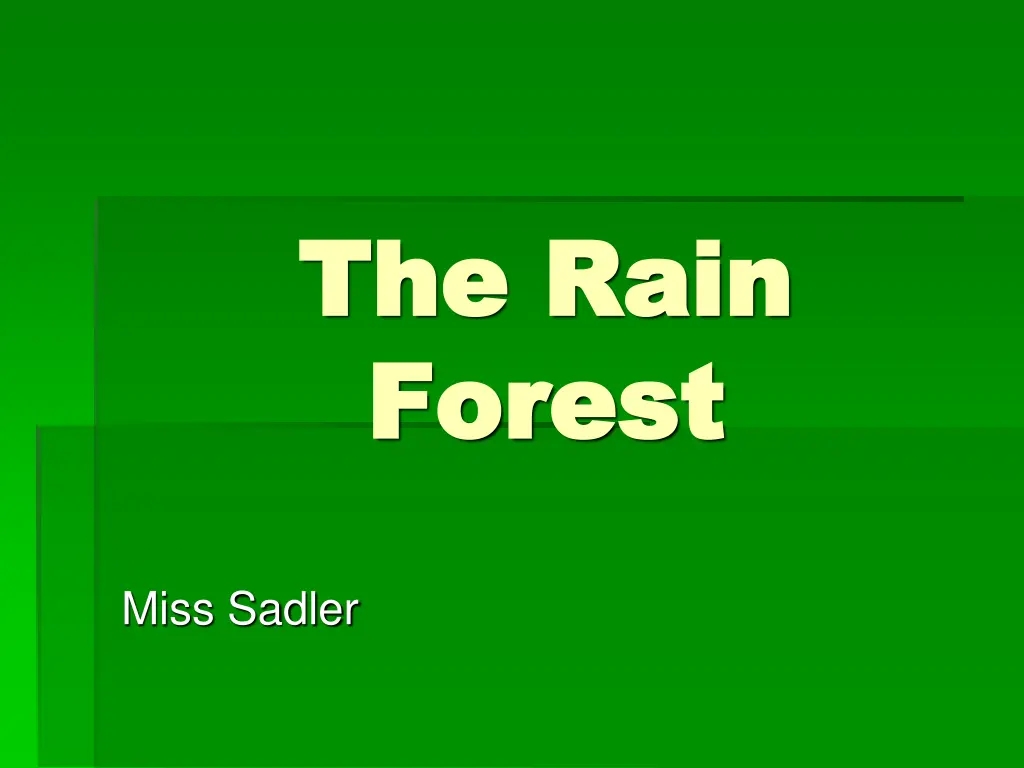
Understanding Tropical Rainforests
Discover the wonders of tropical rainforests, dense ecosystems that support millions of plant and animal species. Learn about the structure of the rainforest, its importance in Earth's ecology, and the diverse range of animals that call it home. Find out where tropical rainforests are located and their significance in the global environment.
Download Presentation

Please find below an Image/Link to download the presentation.
The content on the website is provided AS IS for your information and personal use only. It may not be sold, licensed, or shared on other websites without obtaining consent from the author. If you encounter any issues during the download, it is possible that the publisher has removed the file from their server.
You are allowed to download the files provided on this website for personal or commercial use, subject to the condition that they are used lawfully. All files are the property of their respective owners.
The content on the website is provided AS IS for your information and personal use only. It may not be sold, licensed, or shared on other websites without obtaining consent from the author.
E N D
Presentation Transcript
The Rain The Rain Forest Forest Miss Sadler
What is the Rainforest? What is the Rainforest? Rainforests are very dense, warm, wet forests. They are havens for millions of plants and animals. Rainforests are extremely important in the ecology of the Earth. The plants of the rainforest generate much of the Earth's oxygen. These plants are also very important to people in other ways; many are used in new drugs that fight disease and illness. Toucan
Strata of the Rainforest Strata of the Rainforest Different animals and plants live in different parts of the rainforest. Scientists divide the rainforest into strata (zones) based on the living environment. Starting at the top, the strata are: EMERGENTS: Giant trees that are much higher than the average canopy height. It houses many birds and insects. CANOPY: The upper parts of the trees. This leafy environment is full of life in a tropical rainforest and includes: insects, birds, reptiles, mammals, and more. UNDERSTORY: A dark, cool environment under the leaves but over the ground. FOREST FLOOR: Teeming with animal life, especially insects. The largest animals in the rainforest generally live here. Strata's of the rain forest.doc
Animals of the Rainforest Animals of the Rainforest An incredible number of animals live in rainforests. Millions of insects, reptiles, amphibians, birds, and mammals call them home. Insects are the most numerous animals in rainforests. Tropical rainforests have a greater diversity of plants and animals than temperate rainforests or any other biome. In temperate rainforests, most of the animals are ground dwellers and there are fewer animals living in the forest canopy. Cuckoobb Slothsmall
Where are tropical rainforests? Where are tropical rainforests? The equator is an imaginary circle around the earth, halfway between the north and south poles. Temperatures at the equator are high. These high temperatures cause accelerated evaporation of water, which results in frequent rain in forested areas in the tropics. Tropical rainforests are located in a band around the equator (Zero degrees latitude), mostly in the area between the Tropic of Cancer (23.5 N latitude) and the Tropic of Capricorn (23.5 S latitude). This 3,000 mile (4800 km) wide band is called the "tropics."
There are rainforests in South and Central America, Africa, Oceania (the islands around Australia), and Asia. Tropical rainforests cover only about 7% of the Earth's surface. There are only two seasons in a tropical rainforest, the wet season and the dry season. Temperate rainforests are found along the Pacific coast of the USA and Canada (from northern California to Alaska), in New Zealand, Tasmania, Chile, Ireland, Scotland and Norway. They cover less area than tropical rainforests. The largest rainforests are in the Amazon River Basin (South America), the Congo River Basin (western Africa), and throughout much of southeast Asia. Smaller rainforests are located in Central America, Madagascar, Australia and nearby islands, India, and other locations in the tropics. The Olympic rain forest (located on the Olympic peninsula in the state of Washington, United States of America) is a temperate rain forest near the Pacific ocean.
Major Rainforests Major Rainforests
What are rainforests like? What are rainforests like? Rainfall It is almost always raining in a rainforest. Rainforests get over 80 inches (2 m) of rain each year. This is about 1 1/2 inches (3.8 cm) of rain each week. The rain is more evenly distributed throughout the year in a tropical rainforest (even though there is a little seasonality). In a temperate rainforest, there are wet and dry seasons. During the "dry" season, coastal fog supplies abundant moisture to the forest. Temperature The temperature in a rainforest never freezes and never gets very hot. The range of temperature in a tropical rainforest is usually between 75 F and 80 F (24-27 C). Temperate rainforests rarely freeze or get over 80 F (27 C). The Soil in a Rainforest The soil of a tropical rainforest is only about 3-4 inches (7.8-10 cm) thick and is ancient. Thick clay lies underneath the soil. Once damaged, the soil of a tropical rainforest takes many years to recover. Temperate rainforests have soil that is richer in nutrients, relatively young and less prone to damage.
The Importance of Rainforests The Importance of Rainforests Tropical rainforests cover about 7% of the Earth's surface and are VERY important to the Earth's ecosystem. The rainforests recycle and clean water. Tropical rainforest trees and plants also remove carbon dioxide from the atmosphere and store it in their roots, stems, leaves, and branches. Rainforests affect the greenhouse effect, which traps heat inside the Earth's atmosphere. Some of the foods that were originally from rainforests around the world include cashew nuts, Brazil nuts, Macadamia nuts, bananas, plantains, pineapple, cucumber, cocoa (chocolate), coffee, tea, avocados, papaya, guava, mango, cassava (a starchy root), tapioca, yams, sweet potato, okra, cinnamon, vanilla, nutmeg, mace, ginger, cayenne pepper, cloves, oranges, grapefruit, lemons, limes, passion fruit, peanuts, rice, sugar cane, and coconuts (mostly from coastal areas). RAINFOREST VINE STRING Make a liana vine for a room decoration. http://www.enchantedlearning.com/crafts/strings/rainforest/done.GIF
People Living in Tropical Rainforests There are many indigenous groups of people who have live in the tropical rainforests. Many of these groups, like the Yanomami tribe of the Amazon rainforests of Brazil and southern Venezuela, have lived in scattered villages in the rainforests for hundreds or thousands of years. These tribes get their food, clothing, and housing mainly from materials they obtain in the forests. Forest people are mostly hunter-gatherers; they get their food by hunting for meat (and fishing for fish) and gathering edible plants, like starchy roots and fruit. Many also have small gardens in cleared areas of the forest. Since the soil in the rainforest is so poor, the garden areas must be moved after just a few years, and another part of the forest is cleared. Most indigenous populations are declining. There are many reasons for this. Their primary problems are disease (like smallpox and measles, which were inadvertently introduced by Europeans) and governmental land seizure. Alto orinoco5.jpg


